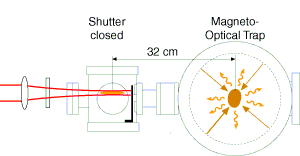In recent years, the study of condensates, particularly in the realm of quantum physics, has unveiled fascinating possibilities that challenge long-held assumptions about the temporal limitations of such fragile states. The phenomenon of condensates emerges as a captivating focal point in the field, shedding light on the intricate interplay between temperature, quantum behavior, and coherence time. Understanding how these ephemeral states can gain stability not only illuminates the essence of quantum mechanics but also holds significant implications for a multitude of scientific disciplines, including materials science, quantum computing, and beyond.
The foundational understanding of condensates primarily rests on their unique ability to exist in a state where atoms converge and behave as a singular quantum entity, typically manifesting in phenomena such as Bose-Einstein condensates (BEC) and fermionic condensates. These states—fragile by nature—are achieved at temperatures close to absolute zero, where thermal energy is drastically reduced, allowing for the exhibition of quantum behaviors on a macroscopic scale. However, their existence has often been regarded as fleeting, with limited coherence times imposed by environmental factors and interactions.
Recent advancements in experimental techniques have heralded a transformative epoch in the manipulation of these states. The introduction of innovative cooling methods and sophisticated optical traps has significantly enhanced the longevity of condensates. These techniques allow researchers to confine atoms with precision, thereby mitigating the disruptive influences of external conditions. The profound implications of these advancements compel scientists to reconsider their perspectives on the lifetime and utility of quantum states.
The first breakthrough lies in the recognition that the interplay between disorder and order can lead to unexpectedly prolonged coherence times. For instance, studies have demonstrated that by introducing controlled disorder into a condensate—broadly understood as randomness on a microscopic scale—researchers can stabilize certain quantum states, granting them a more protracted existence. This seemingly paradoxical phenomenon raises intriguing questions about the resilience of quantum systems and their potential applicability in developing robust quantum technologies.
Moreover, the observation that interactions between particles in a condensate can lead to emergent properties provides further insight into the robustness of these previously ephemeral states. The coherent interactions among bosons or fermions can act as a stabilizing force, allowing condensates to persist longer than conventional wisdom would predict. As a consequence, these findings illuminate a crucial aspect of quantum condensed matter physics: the environment in which these phenomena occur is not merely a background but an active participant in shaping the lifecycle of condensates.
In parallel, the exploration of quasiparticles—collective excitations arising from the interactions within a condensed state—has proven fruitful in extending the temporal lifespan of these systems. Quasiparticles such as phonons, magnons, and polaritons, can effectively interact with the condensate, providing pathways for energy dissipation and coherence preservation. This dynamic underscores the intricate balance that governs the transition between stability and decay, leading to radical re-evaluations of quantum coherence and thermalization processes.
The implications transcend pure theoretical musings. The stabilization mechanisms and discovered longevity of condensates offer tantalizing prospects for practical applications. Quantum computing, with its inherent dependence on the manipulation of qubits in superposition, stands to benefit immensely from these revelations. By enhancing the coherence time of quantum states, researchers can build more reliable quantum bits, reducing error rates and improving computational fidelity. Consequently, what was once deemed the Achilles’ heel of quantum processors may transform into a stronghold of advanced quantum technology.
Furthermore, the utility of longer-lived condensates extends into realms such as high-precision metrology, where the exquisite determination of physical constants and measurements hinges on the stability of quantum states. Enhanced coherence times pave the way for refined instruments that leverage the principles of superposition and entanglement for unprecedented levels of accuracy. This paradigm shift in measurement techniques not only augments scientific inquiry but also fosters a deeper understanding of fundamental physical laws.
As researchers delve deeper into the enigmatic nature of longer-lived condensates, their studies induce a reevaluation of theoretical frameworks. The link between quantum coherence and macroscopic phenomena highlights the necessity for interdisciplinary dialogues among physicists, chemists, and engineers to construct a more unified perspective of matter. Understanding how the porous boundaries between different states of matter influence longevity opens new avenues for research, implicating fields ranging from condensed matter physics to quantum biology and even cosmology.
The burgeoning interest in the longevity of fragile states represents not just a quest for stability but also beckons a profound inquiry into the essence of time itself at the quantum level. The quest to extend the lives of condensates catalyzes an exciting exploration of the interplay of determinism and randomness, coherence and decoherence, and the very fabric of reality. With these revelations, the world of quantum physics stands on the precipice of a transformative paradigm, one that unveils new possibilities and challenges preconceived notions inherent to our understanding of matter and its temporal dimensions.
In essence, the stabilization and prolongation of fragile quantum condensates herald a paradigm shift in our comprehension of quantum states—inviting scrutiny, provoking curiosity, and compelling a future replete with innovation and deeper insights. With the mechanisms unveiling themselves, one is left to contemplate the true potential embedded within the quantum fabric of our universe, as the transient nature of matter dances in the extended realms of time.








